Naval ships broken at Wards 1962-1964
| < 1956-1961 | Δ Index | 1965-1970 > |
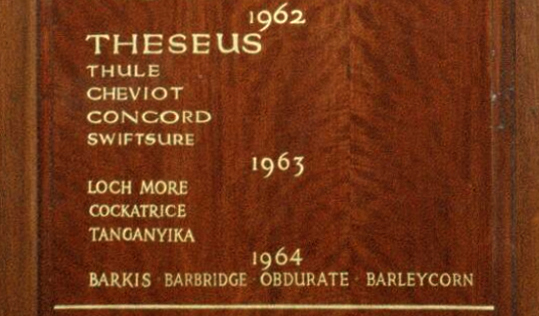
1962
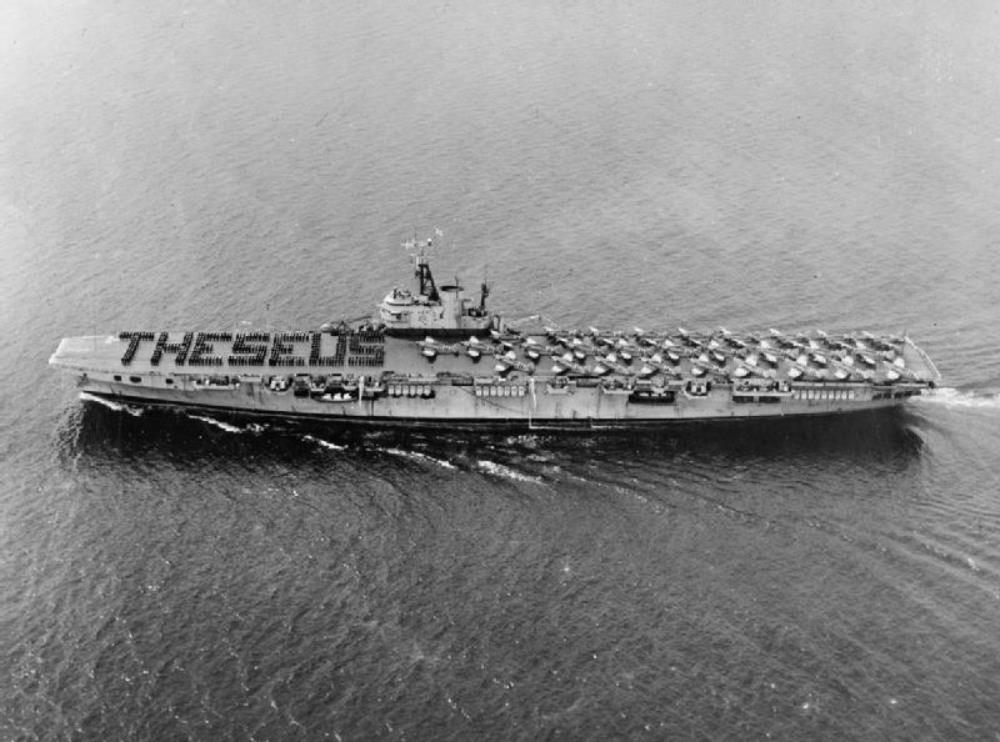 HMS Theseus
HMS Theseus
HMS Theseus – Colossus-class aircraft carrier, built by Fairfield Fairfield Shipbuilding and Engineering Company, Limited, Govan. Launched 6th July 1944, commissioned 9th February 1946.
She was initially used as a training vessel with the Home Fleet. She carried out the first carrier landings at night by jet aircraft on 19 June 1950, before being deployed to Korea from 1951 to 1953 where she carried out a number pf operation patrols, and was involved in many actions.
She also had spells with the Home Fleet and Mediterranean Fleet during this time.
In 1956, Theseus was used as an emergency commando carrier, during the Suez Crisis, with her helicopters transporting troops and evacuating wounded soldiers.
In 1957 she was placed in reserve then sold for scrap arriving at Thos. Ward at Inverkeithing in 29th May 1962.
wikipedia
www.naval-history.net
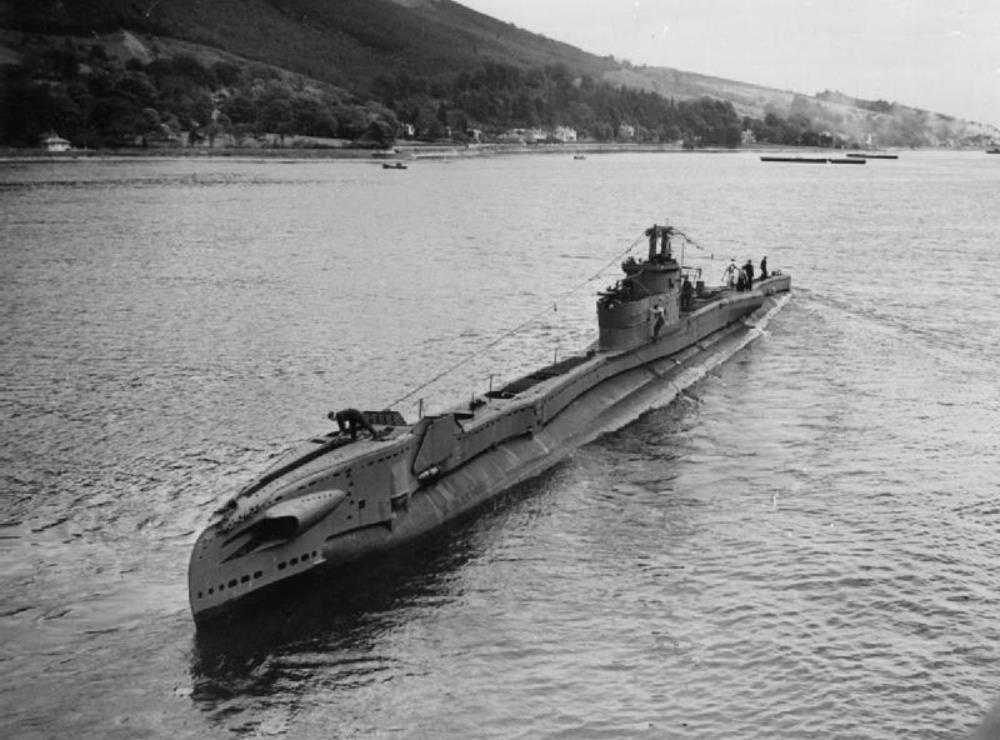 HMS Thule
HMS Thule
HMS Thule – T class submarine, built by Devonport Dockyard, launched 22nd October 1942, commissioned 13th May 1944.
Thule served in the Far East for much of her wartime career, where she sank thirteen junks, two lighters and five sampans with gunfire in the Strait of Malacca in a twelve-day period between 17 December 1944 to 29 December 1944. She went on to sink a further five sailing vessels and three coasters, as well as laying a number of mines.
The submarine was scrapped at Thos W Ward, Inverkeithing on 14 September 1962.
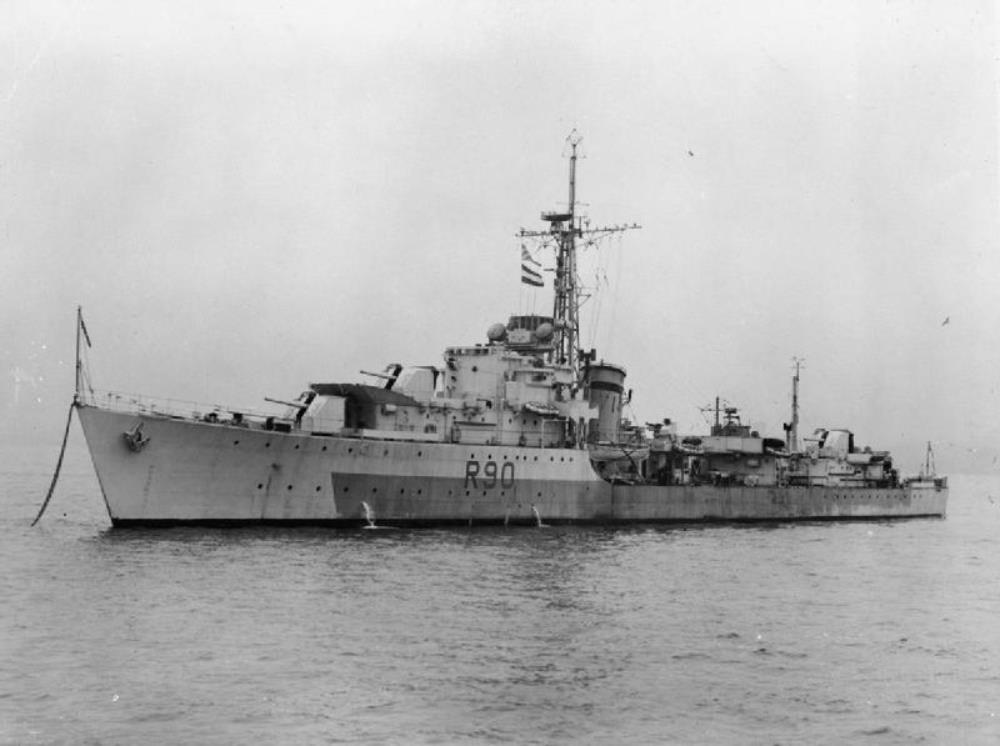 HMS Cheviot
HMS Cheviot
HMS Cheviot – C-class destroyer, built by Alexander Stephen & Sons, Linthouse, launched 2nd May 1944, commissioned 11th December 1945.
In 1946 Cheviot was assigned to the 1st Destroyer Squadron based at Malta. She saw service, along with other Royal Navy ships in preventing illegal immigration into Palestine in 1947.[
She returned to the UK in 1950, and was given an interim modernisation in 1954, with her ‘X’ turret replaced by two Squid anti-submarine mortars.
Between December 1956 and October 1959 she saw service in the Far East, as part of the 8th Destroyer Squadron.
Cheviot was decommissioned in March 1960, and used as a target for homing torpedo trials.
She was sold to Thos W Ward arriving at Inverkeithing on 22 October 1962.
wikipedia
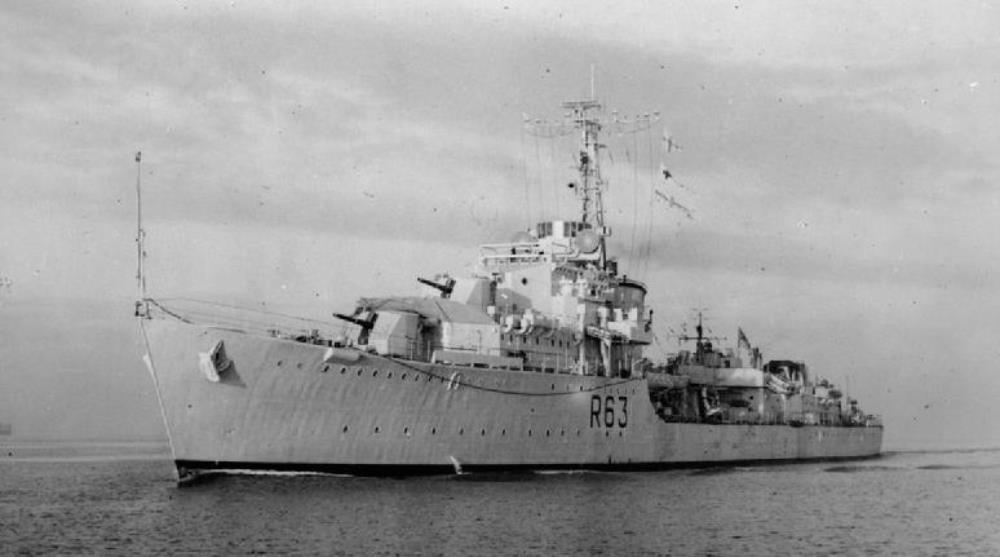 HMS Concord
HMS Concord
HMS Concord – C-class destroyer, built by John I. Thornycroft & Company, Southampton launched 14th May 1945, as HMS Corso, renamed HMS Concord in June 1946, commissioned 20th December 1946.
Concord served in the Far East between 1947 and 1957 as part of the 8th Destroyer Squadron. In 1949, she was involved in the Amethyst Incident – rescuing the sloop Amethyst which became involved in a battle of the Chinese Civil War. After handing over the escort of Amethyst to other vessels, Concord was ordered to Japan. She went on to serve during the Korean War.
Concord was withdrawn from active service in 1957. Following decommissioning she was attached to HMS Caledonia at Rosyth as a static training ship.
She was sold to Thos W Ward arriving at Inverkeithing on 22nd October 1962.
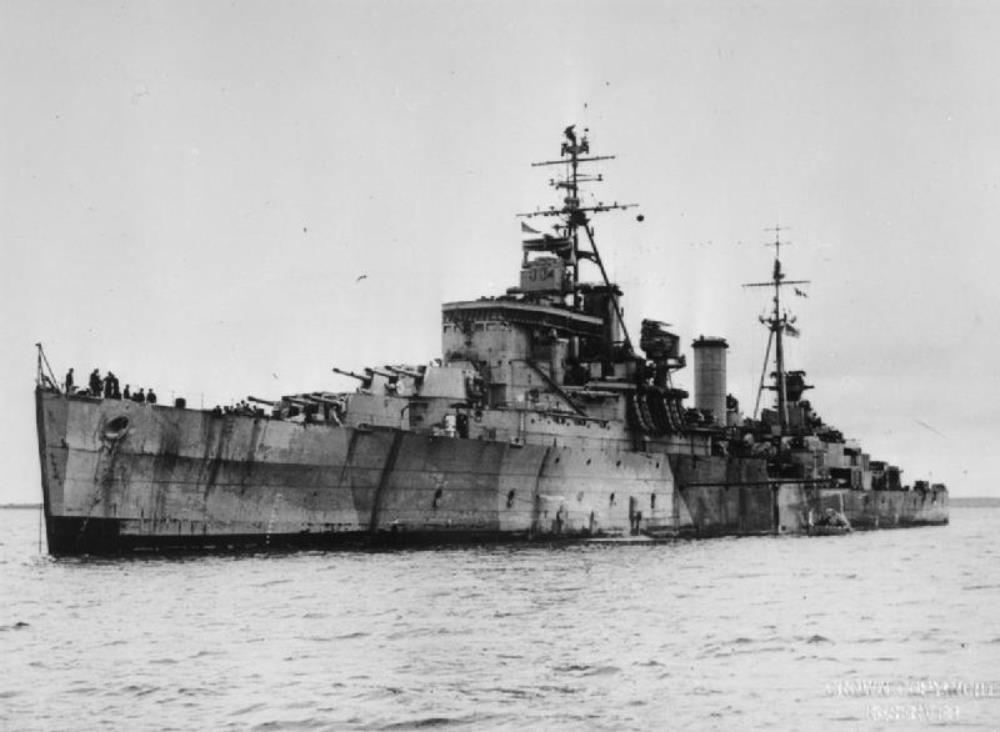 HMS Swiftsure
HMS Swiftsure
HMS Swiftsure – Minotaur-class light cruiser, built by Vickers Armstrong, Newcastle-on-Tyne, launched 4th February 1943, commissioned 22nd June 1944.
Swiftsure was the last Royal Navy cruiser completed during World War Two and was the first British cruiser designed around the concept of an operations room and modern radar, with sensor screens and communications positioned for efficient operation. During her service in the Pacific in 1945, she proved the most efficient anti-aircraft cruiser in the fleet, and was the first Royal Navy cruiser with the 274 lock-and-follow radar targeting system for her main armament
Swiftsure was assigned to the Eastern Fleet, participating in the Okinawa Campaign of March–May 1945 and in June took part in the carrier raid on Truk by the British Pacific Fleet as part of Task Group 111.2, with the cruisers shelling the islands. On 30 August 1945, this group re-entered Hong Kong and took the Japanese surrender there.
In 1946 she was the flagship of the 4th Cruiser Squadron and in 1951 she became the flagship of the 2nd Cruiser Squadron. Graham Hill served aboard the ship as an engine room artificer around this time
She remained inactive until beginning a major refit in February 1957 at Chatham. Midway through the conversion in August 1959, the refit was cancelled. Several different refit options were proposed, but all were considered to be too expensive.
She was eventually sold, arriving at the Inverkeithing yard of Thos. W Ward on 17 October 1962.
1963
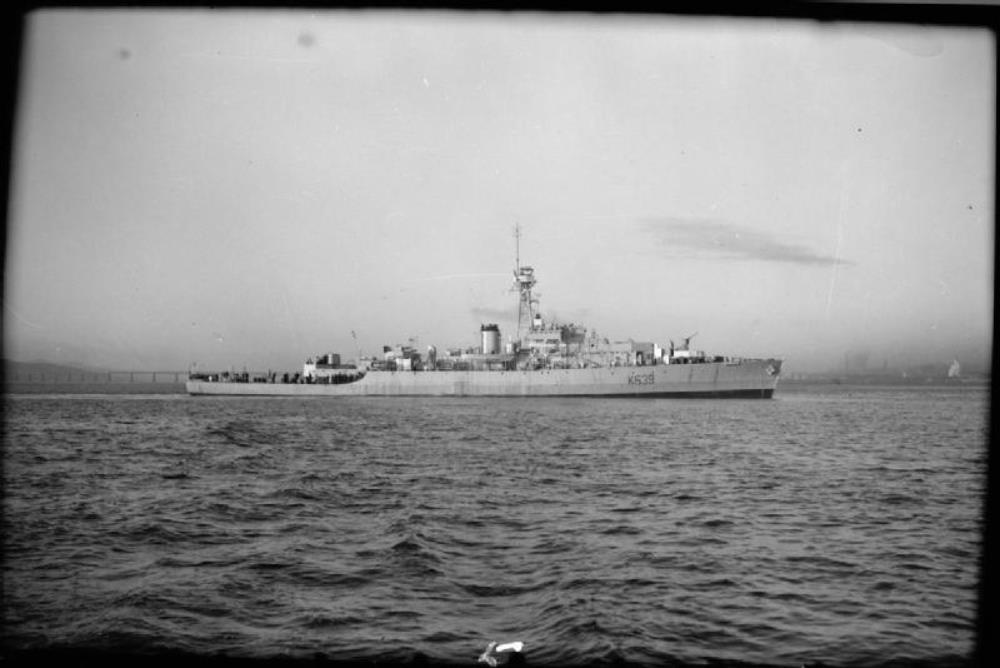 HMS Loch More
HMS Loch More
HMS Loch More – a loch-class frigate, built by Caledon Shipbuilding & Engineering Company, Dundee, launched 3rd October 1944, commissioned 24 February 1945.
Deployed for convoy defence in NW Approaches and Irish Sea until VE Day.
May 1945 Deployed at Scapa Flow for escort of surrendered German submarines, and in June escorted them to Loch Ryan. August 1945 escorted convoys prior to Malayan landings, and then supported of military operations in Dutch East Indies. September and October escort of convoys to Singapore and Saigon carrying service and civilian personnel released from Japanese detention (RAPWI). November 1945 resumed support duties in Sumatra and Java.
January 1946 Deployed in Gulf of Siam. February 1946 deployed at Bombay with HM Cruiser GLASGOW during period of unrest.
June 1946 return to UK and accepted into Reserve. She was refitted at Gibraltar early in 1952 and took take part in Fleet exercises before returned to UK to be paid off in 1953. Although held in Reserve pending Modernisation she was eventually placed on the Disposal List in May 1961.
Sold to T W Ward arriving at Inverkeithing 27th August 1961.
wikipedia
www.naval-history.net
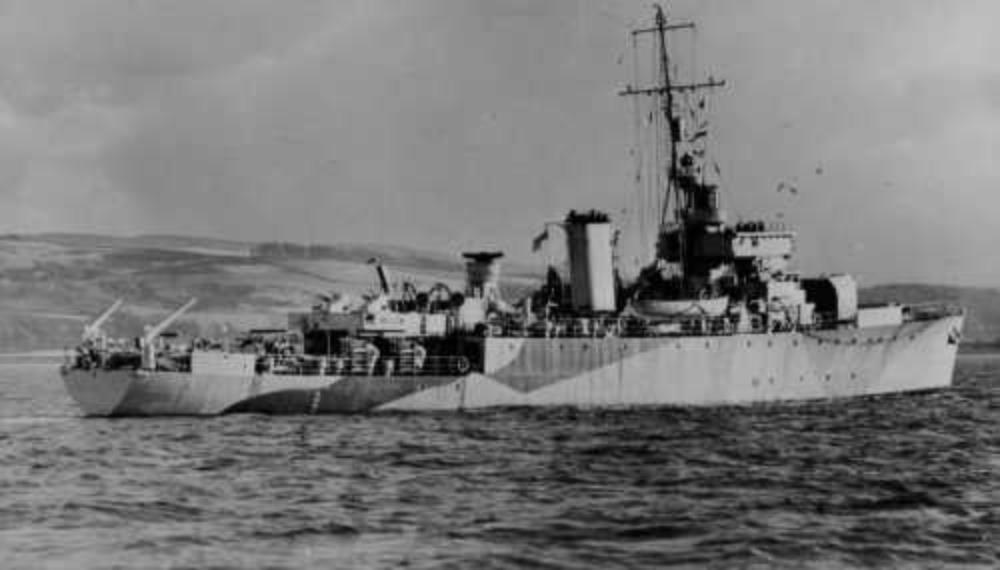 sister ship HMS Lennox – an Algerine-class minesweeper.
sister ship HMS Lennox – an Algerine-class minesweeper.
HMS Cockatrice – Algerine class minesweeper, built by Fleming & Ferguson Ltd., Paisley, launched 27th Oct 1942, commissioned 10th April 1943
19 Jan 1944 conducted A/S exercises at Scapa Flow . June 1944 – “I was on board H.M.S. Cockatrice, an Algerine Minesweeper. On 5th June at 10am we left the Solent to clear the area of nearby sea nicknamed ‘Picadilly Circus’. This was where the invasion force was to wait until being ordered to sail. The next day (D-Day) we led the flotilla as we headed for our landing site, ‘Gold Beach’. We had been told to expect heavy German bombardment, Admiral Ramsey had said that the first boats probably wouldn’t stand a chance, but the only noise we heard on the crossing was our own planes flying overhead. The Germans didn’t know we had arrived until our heavy guns opened fire. Once we had cleared the way for the invasion force our boats were ordered to put up a smokescreen around some of the battleships that were sitting of the coast firing on the Germans. We spent the next few weeks escorting other boats across the channel and we also escorted the boats laying the ‘Pluto’ fuel line. I was never scared at the time. Maybe it was because I was only 19, but we never believed we’d get hit.” Alfred Ramus, 10 June 2004.
May 1945 – MID awarded for courage, resolution and skill in minesweeping operations clearing a channel from the Humber to Heligoland and thence along the North German Coast to Cuxhaven, Hamburg and Bremerhaven
Scrapped on 29 August 1963.
uboat.net
www.bbc.co.uk/history/ww2peopleswar/stories/
www.mcdoa.org.uk/ww_ii_awards
wikipedia
 sister ship HMS Lennox – an Algerine-class minesweeper.
sister ship HMS Lennox – an Algerine-class minesweeper.
HMS Tanganyika – an Algerine class minesweeper, built by Lobnitz & Co. Ltd., Renfrew launched 12th April 1944, commissioned 7th July 1944
Minesweeping – MID awarded for courage, resolution and skill in minesweeping operations clearing a channel from the Humber to Heligoland and thence along the North German Coast to Cuxhaven, Hamburg and Bremerhaven during May 1945 (Operation Dropkick).
Scrapped 2 September 1963.
uboat.net
mcdoa.org.uk/ww_ii_awards
wikipedia
1964
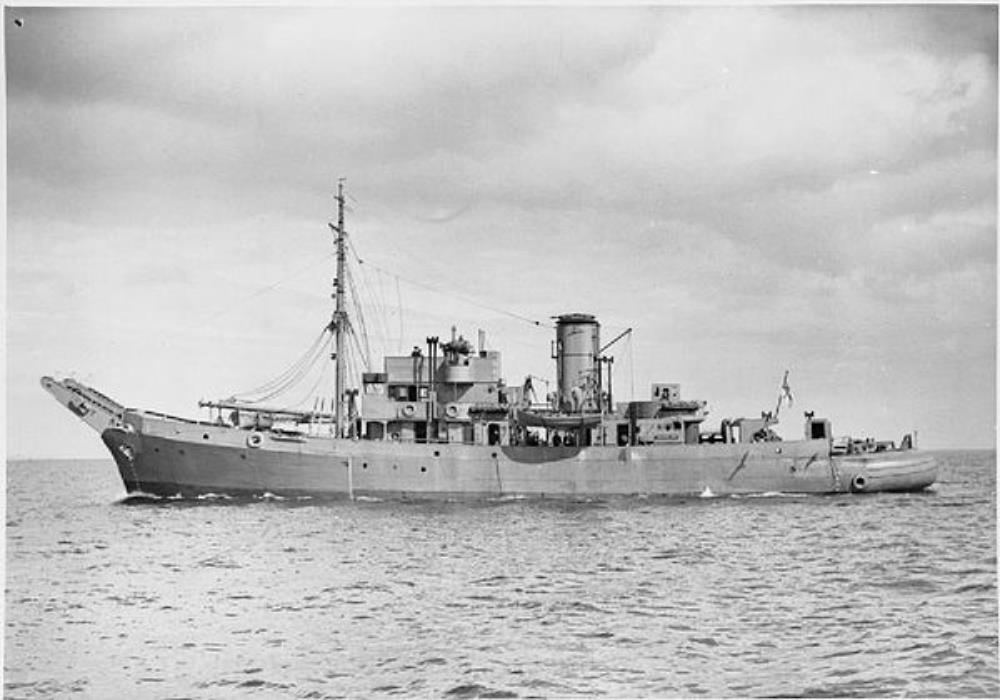 sister ship HMS Barglow – a bar-class boom defence vessel
sister ship HMS Barglow – a bar-class boom defence vessel
HMS Barbridge – a Bar-class boom defence vessel, built by Lobnitz & Co. Ltd., Renfrew, launched 8th Aug 1941, commissioned 21st October 1941
74 of these vessels were built during WWII
Scrapped November 1964
www.battleships-cruisers.co.uk
www.uboat.net
 HMS Barkis
HMS Barkis
HMS Barkis – a Bar-class boom defence vessel, built by Ferguson Shipbuilders. Ltd., Port Glasgow, launched 29th March 1945, commissioned 21st June 1945
74 of these vessels were built during WWII
HMS Barleycorn – a Bar-class boom defence vessel, built by J. Lewis & Sons Ltd., Aberdeen, launched 6th March 1943, commissioned 13th Aug 1943. 74 of these vessels were built during WWII
On the 29th March 1957, Scapa Flow ceased to be a naval base as part of a series of cuts to the Royal Navy’s budget. The White Ensign was hauled down for the last time at Lyness, but there were no high-ranking officers to witness the final chapter of this once great harbour and the only ship present was a humble boom defence ship, HMS Barleycorn.
Brian Smither served on HMS Barleycorn at Rosyth 1957 – 1958
scapaflowwrecks.com
www.shipsnostalgia.com
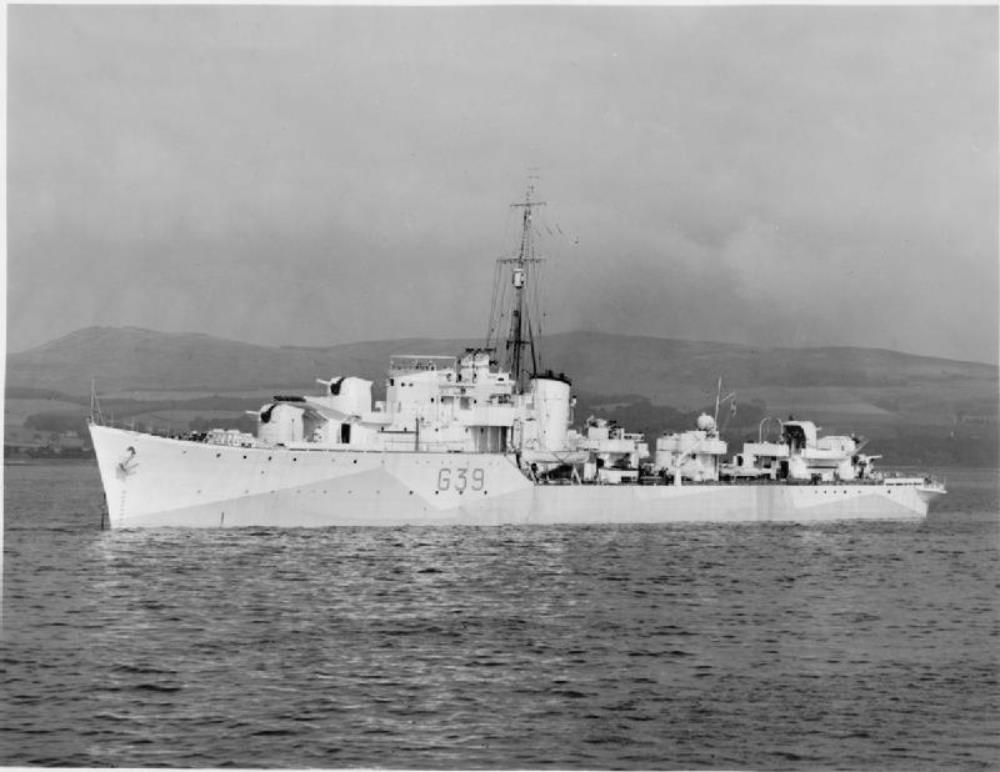 HMS Obdurate
HMS Obdurate
HMS Obdurate – an O-class destroyer built by William Denny and Brothers, Dumbarton, launched 19th February 1942, commissioned 3rd September 1942.
During the Second World War she escorted Arctic convoys in 1942 and 1944, and Atlantic convoys in 1943, taking part in the Battle of the Barents Sea in 1942.
At the end of the war, she escorted the cruiser Norfolk whilst the latter took King Haakon VII back to Norway. On 14 July 1945 US president Harry Truman transferred to Obdurate from the cruiser USS Philadelphia in the English Channel to travel the rest of his journey to the Potsdam Conference.
After the war Obdurate was used for torpedo training at Portsmouth. In 1948 she was placed into reserve before a refit in 1949 and 1950. She was then held in reserve at Chatham Dockyard between 1950 and 1952. Between 1952 and 1956 she was part of the Nore local squadron. Between 1957 and 1959 she was again held in reserve at Portsmouth. In 1959 she was used in tests by the NCRE (Naval Construction Research Establishment) at Rosyth.
Sold to Thos. Ward, she arrived at Inverkeithing on 30th November 1964.
wikipedia
personal recollections here . . . www.hmsgangestoterror.org
| < 1956-1961 | Δ Index | 1965-1970 > |